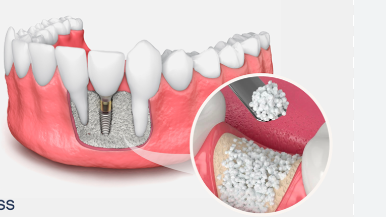Tooth Extraction and Bone Grafting: An In-Depth Guide
Tooth extraction is a common dental procedure performed to address severe decay, infection, or trauma. However, in many cases, the removal of a tooth can lead to bone loss in the jaw, which may compromise future dental procedures like implants. Bone grafting has emerged as an effective solution to preserve bone density and structure after tooth extraction. This article delves into the intricate relationship between tooth extraction and bone grafting, exploring the procedures, benefits, costs, and more.

2. What Is Tooth Extraction?
Types of Tooth Extractions
Tooth extraction is the process of removing a tooth from its socket. There are two main types of extractions:
- Simple Extraction: Performed on visible teeth under local anesthesia.
- Surgical Extraction: A more complex procedure for teeth that are not easily accessible, such as impacted wisdom teeth.
Reasons for Tooth Extraction
- Severe Decay: When a tooth is beyond repair.
- Periodontal Disease: Advanced gum disease that compromises the tooth’s stability.
- Trauma: Fractured or broken teeth that cannot be restored.
- Overcrowding: To make space for orthodontic treatment.
- Impacted Teeth: Commonly wisdom teeth that fail to erupt properly.
3. Understanding Bone Grafting
What Is Bone Grafting?
Bone grafting is a surgical procedure that involves transplanting bone tissue to repair or rebuild bones. In dental applications, it is commonly used to restore the jawbone’s integrity after tooth loss or extraction.
Types of Bone Grafts
- Autografts: Bone harvested from the patient’s own body.
- Allografts: Bone sourced from a donor.
- Xenografts: Bone derived from animals, typically bovine.
- Synthetic Grafts: Man-made materials designed to mimic natural bone.
4. The Connection Between Tooth Extraction and Bone Grafting
Why Bone Grafting May Be Necessary After Extraction
When a tooth is removed, the surrounding bone may deteriorate over time due to lack of stimulation. Bone grafting helps:
- Preserve the jawbone’s structure.
- Maintain aesthetic facial features.
- Provide a stable foundation for dental implants.
5. The Procedure: Step-by-Step
Tooth Extraction Process
- Administration of anesthesia.
- Loosening of the tooth using specialized instruments.
- Removal of the tooth from the socket.
- Cleaning the socket to prevent infection.
Bone Grafting Process
- Placement of the bone graft material into the socket.
- Securing the graft with a membrane or stitches.
- Allowing the graft to integrate with the natural bone over time.
6. Benefits of Bone Grafting After Tooth Extraction
- Prevents bone loss.
- Prepares the site for future dental implants.
- Enhances facial aesthetics.
- Improves overall oral health.
7. Risks and Complications
While generally safe, tooth extraction and bone grafting may involve risks such as:
- Infection
- Prolonged swelling or pain
- Graft rejection
- Nerve damage (rare)
8. Recovery and Aftercare
What to Expect After the Procedure
- Swelling and mild discomfort.
- Healing time varies but typically takes a few weeks for the soft tissue and several months for the bone.
Tips for a Smooth Recovery
- Avoid smoking and alcohol.
- Stick to a soft food diet.
- Maintain oral hygiene without disturbing the surgical site.
9. Cost Analysis of Tooth Extraction and Bone Grafting
Factors Affecting the Cost
- Type of extraction (simple or surgical).
- Type of bone graft material used.
- Geographical location.
- Dentist’s expertise.
Regional Variations
Costs can vary significantly based on location. For example:
| Region | Tooth Extraction Cost | Bone Grafting Cost |
|---|---|---|
| USA | $150 – $650 | $300 – $3,000 |
| UK | £100 – £500 | £200 – £2,000 |
| India | ₹500 – ₹3,000 | ₹2,000 – ₹20,000 |
10. Alternatives to Bone Grafting
- Ridge preservation techniques.
- Bone substitutes like bioactive glass.
- Mini dental implants (for minimal bone loss).
11. Frequently Asked Questions (FAQs)
1. How long does it take for a bone graft to heal?
Complete healing can take 3 to 6 months.
2. Is bone grafting painful?
The procedure is done under anesthesia, so it’s generally not painful.
3. Can bone grafting fail?
While rare, factors like smoking or poor oral hygiene can lead to failure.
12. Conclusion
Tooth extraction and bone grafting are crucial procedures in modern dentistry, often performed together to ensure long-term oral health and functionality. By understanding the processes, benefits, and risks, patients can make informed decisions about their dental care.
13. Additional Resources
- American Dental Association (ADA)
- National Institute of Dental and Craniofacial Research (NIDCR)
- British Dental Association (BDA)


